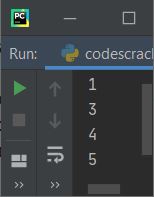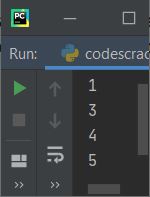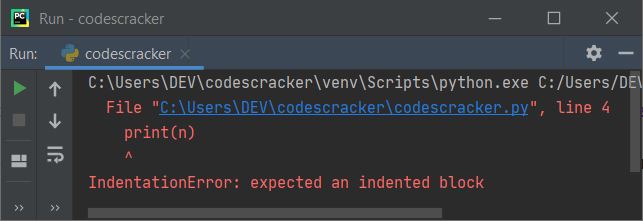- Python Basics
- Python Tutorial
- Python Applications
- Python Versions
- Python environment setup
- Python Basic Syntax
- Python end (end=)
- Python sep (sep=)
- Python Comments
- Python Identifiers
- Python Variables
- Python Operators
- Python Ternary Operator
- Python Operator Precedence
- Python Control and Decision
- Python Decision Making
- Python if elif else
- Python Loops
- Python for Loop
- Python while Loop
- Python break Statement
- Python continue Statement
- Python pass Statement
- Python break vs. continue
- Python pass vs. continue
- Python Built-in Types
- Python Data Types
- Python Lists
- Python Tuples
- Python Sets
- Python frozenset
- Python Dictionary
- List vs. Tuple vs. Dict vs. Set
- Python Numbers
- Python Strings
- Python bytes
- Python bytearray
- Python memoryview
- Python Misc Topics
- Python Functions
- Python Variable Scope
- Python Enumeration
- Python import Statement
- Python Modules
- Python operator Module
- Python os Module
- Python Date and Time
- Python Exception Handling
- Python File Handling
- Python Advanced
- Python Classes and Objects
- Python @classmethod Decorator
- Python @staticmethod Decorator
- Python Class vs. Static Method
- Python @property Decorator
- Python Keywords
- Python Keywords
- Python and
- Python or
- Python not
- Python True
- Python False
- Python None
- Python in
- Python is
- Python as
- Python with
- Python yield
- Python return
- Python del
- Python from
- Python lambda
- Python assert
- Python Built-in Functions
- Python All Built-in Functions
- Python print() Function
- Python input() Function
- Python int() Function
- Python len() Function
- Python range() Function
- Python str() Function
- Python ord() Function
- Python chr() Function
- Python read()
- Python write()
- Python open()
- Python Examples
- Python Examples
pass statement in Python with examples
As its name suggests, the "pass" statement does nothing, as it gets treated as a null statement. Now, this question may arise in your mind:
- If the "pass" statement does nothing, then why do we need/use it, or why does Python provide this statement?
The answer to this question may depend on the programmer's needs. But I've provided two solid reasons or answers for the above question, namely:
- We can use the "pass" statement wherever the statement is required to avoid syntax errors, and only if that section of the program does not require any action.
- We can also use the "pass" statement if we want to add some blocks of codes in the future. In other words, the "pass" statement can also be used as a placeholder for whatever code we want to write in the future.
Important: The "pass" statement does nothing; it is only required when syntactically needed to avoid syntax errors, but actually does nothing. That is, if the program needs to provide the statement but we want to do nothing, then we can use the "pass" keyword or statement there.
Syntax of the Python pass statement
The complete statement of "pass" is nothing but the "pass" keyword itself; therefore, if we talk about its syntax, then it is just the keyword "pass," as shown below:
pass
We can use the "pass" statement wherever we want in the whole Python program, such as:
- We can use it in a conditional block.
- We can use it in a user-defined function.
- We can also use it in classes.
Examples of a pass statement
The theory part of the "pass" statement is completed. Therefore, it's time to follow its example. An example helps a lot to understand the topic in the world of computer programming like Python.
nums = [1, 2, 3, 4, 5] for n in nums: if n==2: pass else: print(n)
The snapshot given below shows the sample output produced by the above example program on the "pass" statement:

The number 2 is skipped to print, as shown in the sample output above.Because I've applied the condition "n == 2," whenever the value of n becomes equal to 2, program flow goes inside the body of "if." And inside the body of "if," I've used the "pass" statement, which does nothing.
Since the "pass" statement does nothing, it just passes that block or body where it is present. Let's take another example related to the previous program:
nums = [1, 2, 3, 4, 5] for n in nums: if n==2: pass print(n)
This time, the program produces all five numbers on the output as shown in the snapshot given below:

Unlike continue, which forces the loop to continue for its next iteration, skipping the rest statement(s) that lie below the continue keyword in the same indentation causes it to execute. Confused ? Let's take an example to differentiate between these two:
nums = [1, 2, 3, 4, 5] for n in nums: if n==2: continue print(n)
This program produces the following output:

Either "pass" works as a placeholder for future code or is used to avoid a syntax error. For example, the following program:
nums = [1, 2, 3, 4, 5] for n in nums: if n == 3: print(n)
produces an error like shown in the snapshot given below:

Therefore, to avoid these types of syntax errors, we use the "pass" statement like shown in the program given below:
nums = [1, 2, 3, 4, 5] for n in nums: if n == 3: pass print(n)
« Previous Tutorial Next Tutorial »